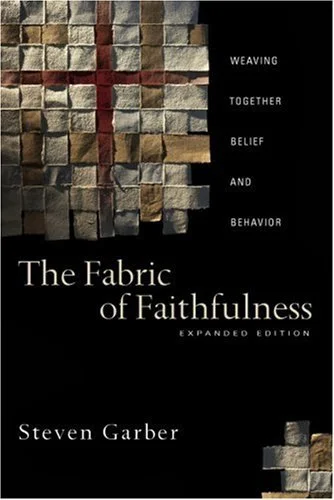The Fabric of Faithfulness
For many of us the college years are an especially formative time, shaping who we become as people and pointing us in the direction of a career. That is, at least theoretically. Each of us have different kinds of college experiences, of course, shaped by our own choices and priorities as well as by factors beyond our control.
I started college in the fall of 2001 at a state university as a business major because I thought that was as good a way as any to ensure I’d have a job when I graduated. And I chose the management concentration because as an eighteen year old I thought managing people sounded better than being managed. Halfway through my freshman year I’d come to hate it and had terrible grades, so I switched over to the major with the fewest math requirements.
Somehow it hasn’t all turned out terribly, which I attribute solely to God’s grace, but I do wonder how my college years would have been different had I made life-altering decisions based on even better questions than how to avoid math requirements — for instance, questions about the nature of the world, and God’s relationship to it and to me and to everyone else, and how a college education may actually be a gift to be stewarded for God’s glory and to be used for loving our neighbors.
I hadn’t heard of Steven Garber yet, but I wish I had. His book The Fabric of Faithfulness: Weaving Together Belief and Behavior (IVP) came highly recommended, and now I see why. Garber currently leads The Washington Institute in DC, “a place to explore common grace for the common good.”
In working with students over many years, Garber noticed that the university setting is often an environment that allows room for private beliefs and opinions, but it isn’t comfortable with affirmations of public truths, especially ones clearly connected to private, and deeply held, beliefs. Therefore, those students seeking integration of their deepest beliefs with the realities of the world around them are often frustrated, and at times they face a crisis of identity or even a crisis of faith. When integration is thwarted, dis-integrated cynics are born.
Garber’s work has been an effort to give students a vision, as the subtitle puts it, for weaving belief and behavior together into a fabric of faithfulness. Higher education isn’t to be used simply as a ticket to privilege, but, rooted in our deepest beliefs, a means of serving others, of seeking the common good.
How does one come through college prepared for a life with belief and behavior woven together?
He has found three crucial factors:
Over the course of hours of listening to people who still believe in the vision of a coherent faith, one that meaningfully connects personal disciplines with public duties, again and again I saw that they were people (1) who had formed a worldview sufficient for the challenges of the modern world, (2) who had found a teacher who incarnated that worldview and (3) who had forged friendships with folk whose common life was embedded in that worldview. There were no exceptions.
I think the wisdom in prioritizing those three things speaks for itself, but Garber illustrates it much more fully in the book, and he does so largely through different people’s vocational stories and by asking the big questions that only we can answer for ourselves.
Garber includes a quote from Jacques Ellul, the French philosopher and theologian, on the importance of working these things out while we’re young, before it’s too late: “You must take sides earlier — when you can actually make choices, when you have many paths opening at your feet, before the weight of necessity overwhelms you.”
Though I wish I’d known about this book during college, I’m glad to know about it now, on the other side of both college and grad school, still working on figuring out the particulars of my vocation and how I could best steward it to serve the common good. Needless to say I highly recommend the book for everyone, but especially for those in their college years, or for those who interact with college students, whether as parents, siblings, teachers, pastors, or friends.
Weaving together belief and behavior is an ongoing process as we seek to be faithful in all areas of life, and Garber has given us some clues to point us in the right direction.
Develop a worldview. Find a mentor. Be in community.
